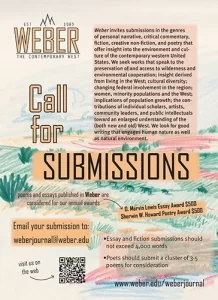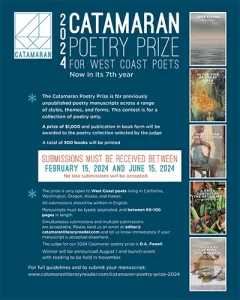The Kenyon Review – Spring 2012
Volume 34 Number 2
Spring 2012
Quarterly
Mary Florio
The Kenyon Review, from its heartland perch in Gambier, Ohio, has captured the map of American experience for some seventy years. Over time, it has grown to represent international literature and the arts, with a lively internet presence and a summer residential writing program. It has been easy to obtain (a submariner once purchased a gift subscription for me from a faraway port), which is important in a business sense; some publications have mysterious distribution practices, and now, more than ever, each literary magazine should be ubiquitous. To this end, over the past year, The Kenyon Review has been available on electronic platforms, which is a great advantage to the otherwise unforgiving minute, as Kipling might say. I hope more literary journals are available electronically so that, as a reader, you can salvage from the loss of time—waiting on a train or a bus, stalling in the supermarket line—remnants of loss, joy and redemption.
The Kenyon Review, from its heartland perch in Gambier, Ohio, has captured the map of American experience for some seventy years. Over time, it has grown to represent international literature and the arts, with a lively internet presence and a summer residential writing program. It has been easy to obtain (a submariner once purchased a gift subscription for me from a faraway port), which is important in a business sense; some publications have mysterious distribution practices, and now, more than ever, each literary magazine should be ubiquitous. To this end, over the past year, The Kenyon Review has been available on electronic platforms, which is a great advantage to the otherwise unforgiving minute, as Kipling might say. I hope more literary journals are available electronically so that, as a reader, you can salvage from the loss of time—waiting on a train or a bus, stalling in the supermarket line—remnants of loss, joy and redemption.
This issue of The Kenyon Review did not shy away from its pledge to represent international voices: Julia Grawemeyer translates Tahar Ben Jelloun who was approached by Jean Genet for a translation of his own in a magical narrative. Derek Palacio’s short story “Sugarcane” decodes medicine and Communism in a powerful narrative that eclipses place, any radical shifts of time, the economy of sugar and sex and even intellectual identity. Marilyn Hacker translates Jean-Paul de Dadelsen’s poems “Women of the Plain” and “The Last Night of the Pharmacist’s Wife,” which resound with such imagery as:
The wind above the glaciers that rushed here from the desert
comes barely cooled to torment the tall pine tree’s branches.
When everything is in labor, how can you sleep, how
can you die?
You can feel it in your teeth, even in translation. Sara Khalili translates Shahriar Mandanipour’s “King of the Graveyard,” which is dedicated to Iran’s forbidden graves. The story is at once an examination of a social and political reality and a skillfully etched human reality that cannot be submerged in the story’s setting. Lines such as “Who knows whose dust it is?” will seize you because, despite the disciplined prose, this is not exclusively reportage—this is art.
Nhi Huynh and Minh Nguyen’s short story “First Confession” shares the gritty realism of Palacio’s “Sugarcane” but is set in an impoverished Vietnamese community and mission school during the end of the Vietnam War. Like the Mandanipour fiction, it is impossible not to be affected by the setting, but the fresh outlook and innocence of the protagonist ground you in other ways with anchors that are personal, not necessarily journalistic—a pet dog is served for dinner, stomach worms are extracted manually, sucked right out of the protagonist’s body, and you are firmly grounded in family, in the overwhelming backdrop of hunger as the boys struggle for social rank, as the bombs fall.
The timbre is diverse. J. Allyn Rosser delivers a radical poem “Housing the Id” that transcends nationhood in a song to the psychological collective. Linda Gregerson and Rusty Morrison push the boundaries between genres and perhaps kinds of realities. Luke Mogelson provides the short fiction “Sea Bass” that opens with a strong portrait of a father loosely linked to a Sacramento lumberyard and moves forward with the relentless grace and the lyrical energies of a summer music festival.
I hope that when you pick up this issue of The Kenyon Review that you will read it backwards. Tania James’s short-story “What To Do with Henry” is a brilliant heartbreaker, or, as one from Queens would call it, a true “ball buster.” (I’m taking liberties with the slang.) If you were from the Far Rockaway reach of Queens, you might hate it before such diagnosis because it’s an affront to reality to cry over fiction, and this story will make you cry.
Much of this issue will evoke strong emotions, maybe even strange emotions. In the “First Confession,” I was moved by the oblique sacrifice, the way that authors Huynh and Nguyen communicate strong feeling with an item entirely unrelated to the emotion—the request for food, for example, being a way of exhibiting dissent. Economic disempowerment does not always produce philistines, but the emotional feelings produced by the very real “Bridges and Tunnels” nonfiction by Suzanne Farrell Smith, or especially the very surreal story about the chimpanzee (“What to Do with Henry”) strikes the part of me loosely from Queens as perhaps overly sensitive. But Smith’s carefully narrated memory of a Lionel collection and a different kind of transportation that destroyed a family, will evoke pause, consideration and reflection.
These stories are simply told, riveting, smart and total ball busters. For this reason, after Smith’s piece, I read the rest of this magazine starting from the back, in some way hoping that the burn of the writing lessened with the elapse of pages. Fortunately, it did not.
[www.kenyonreview.org]




